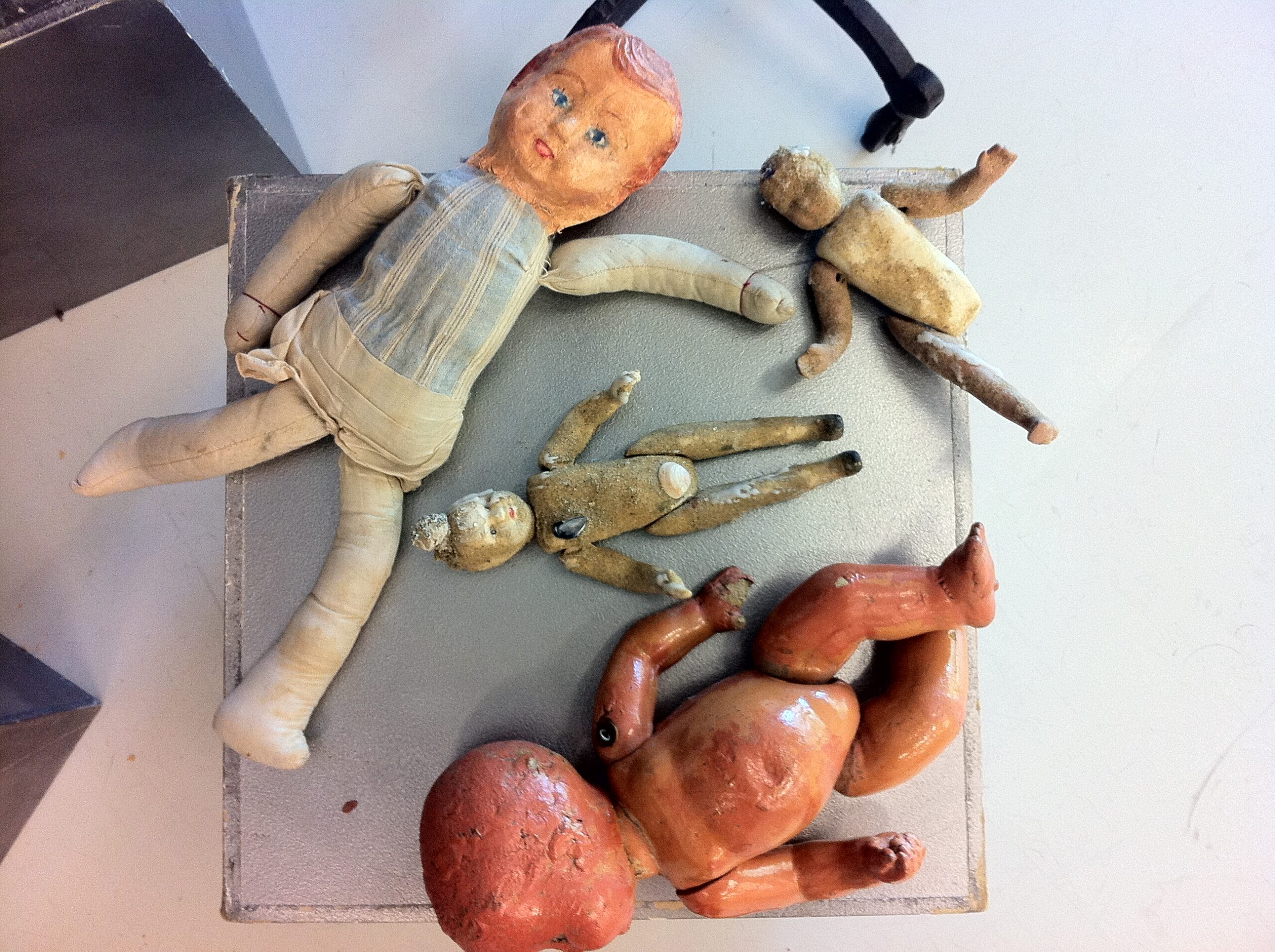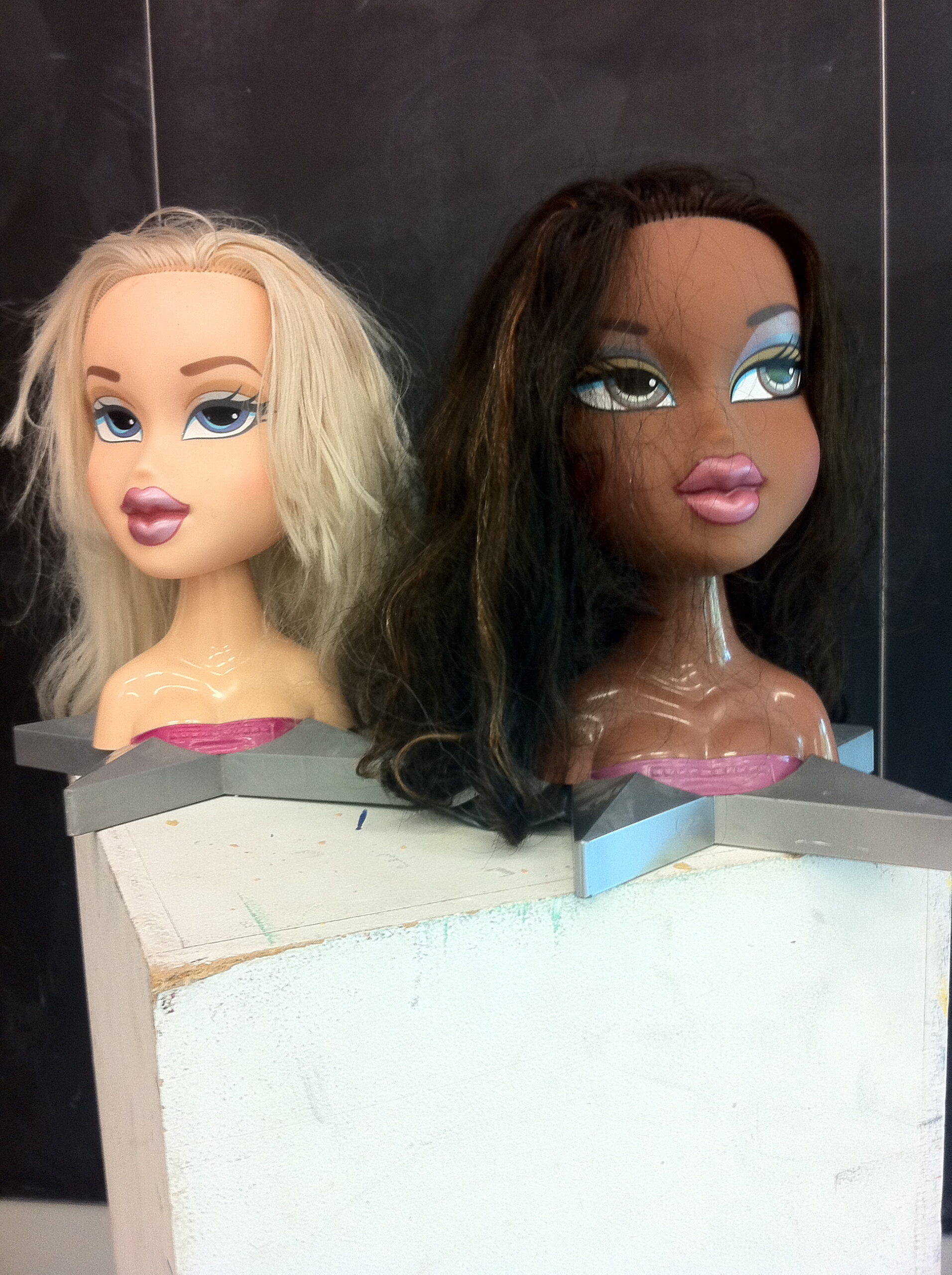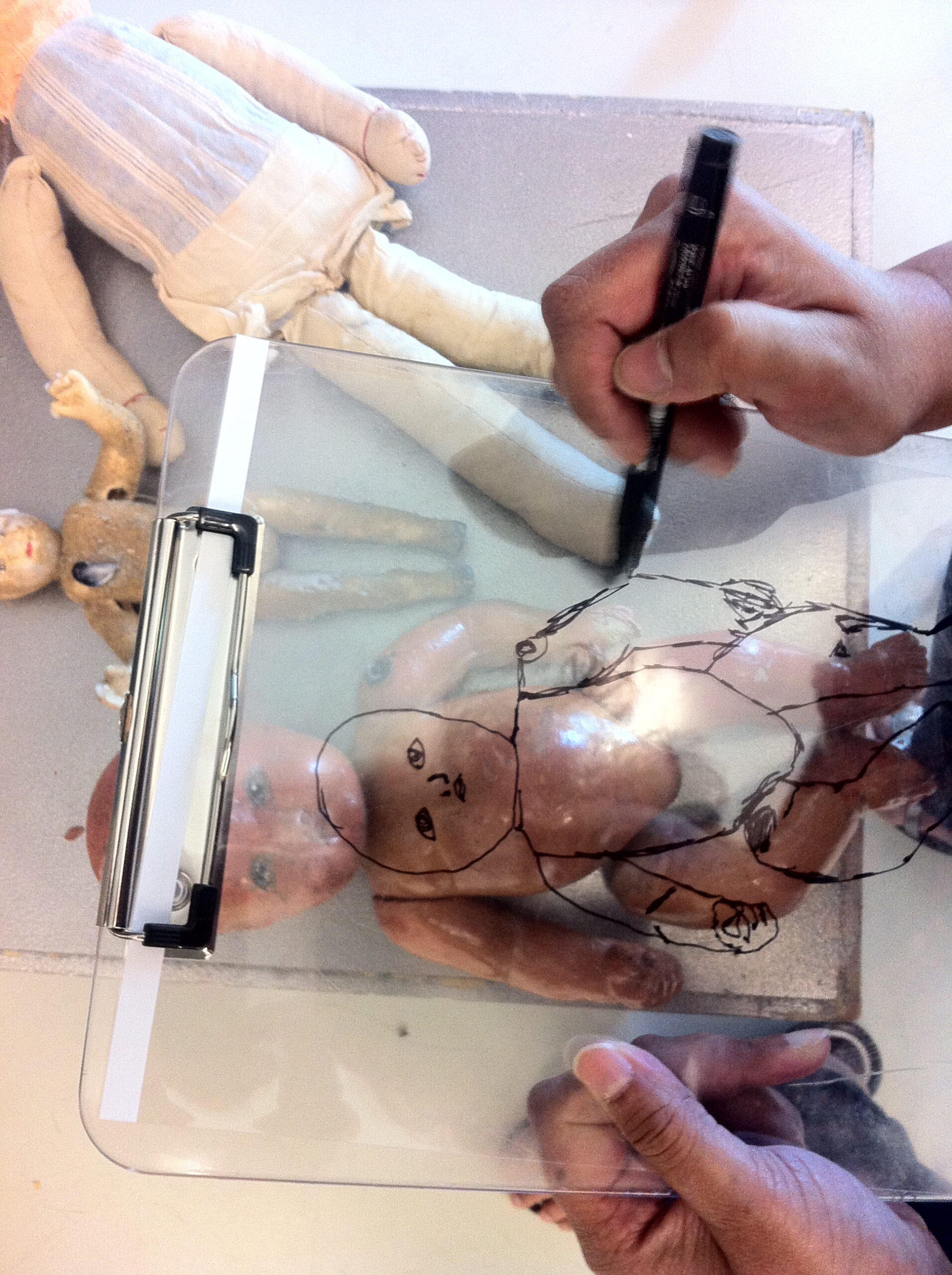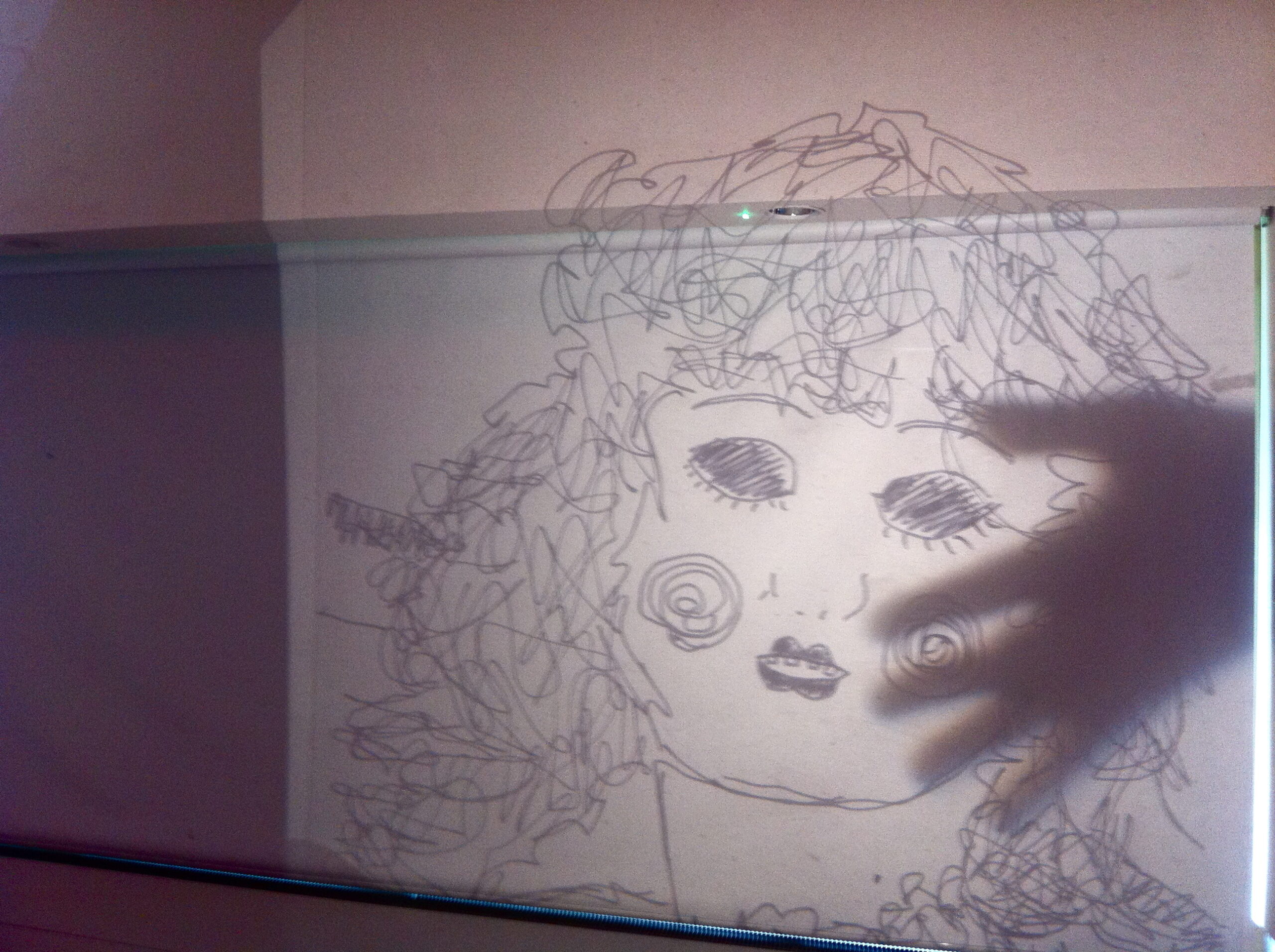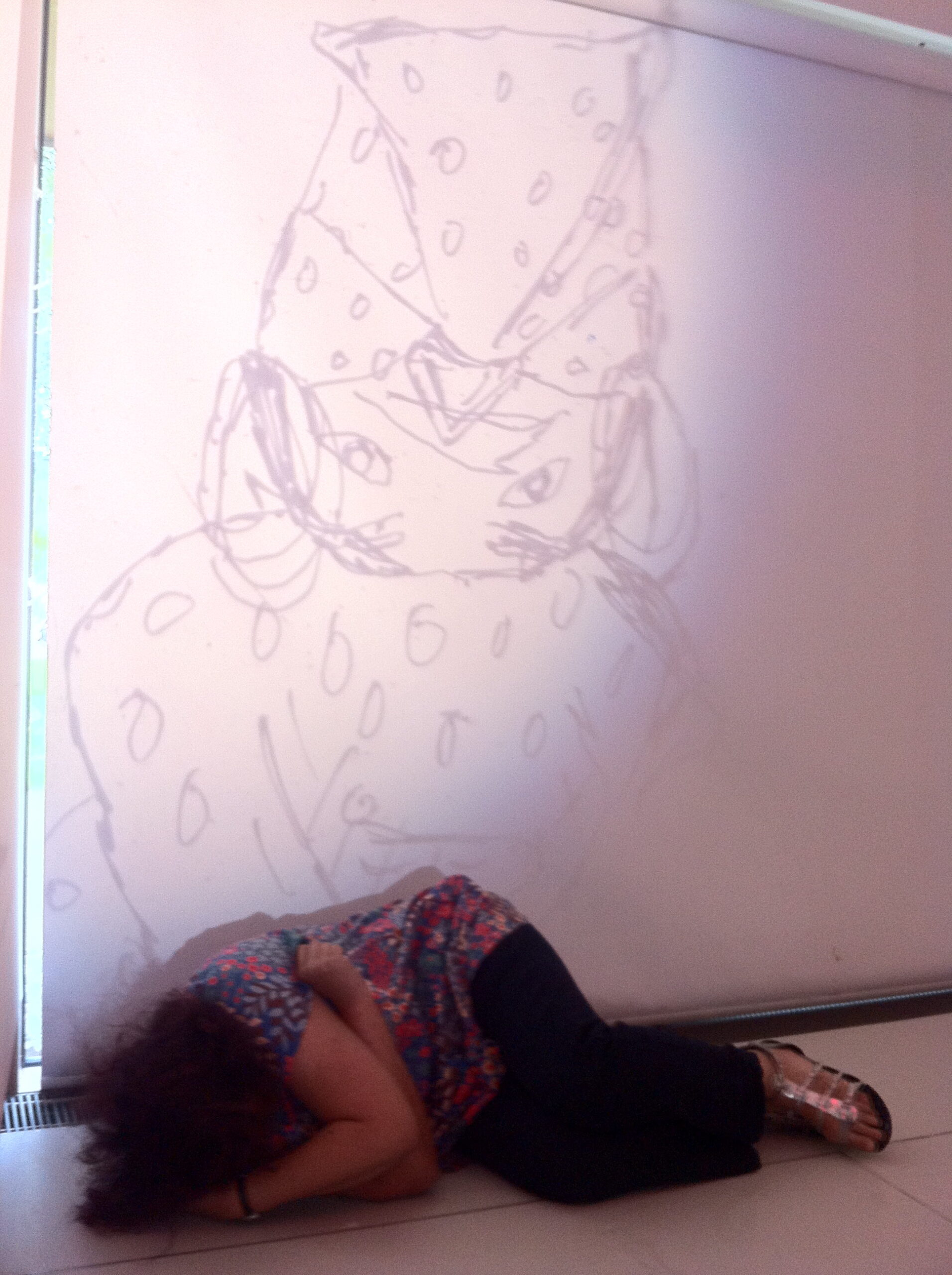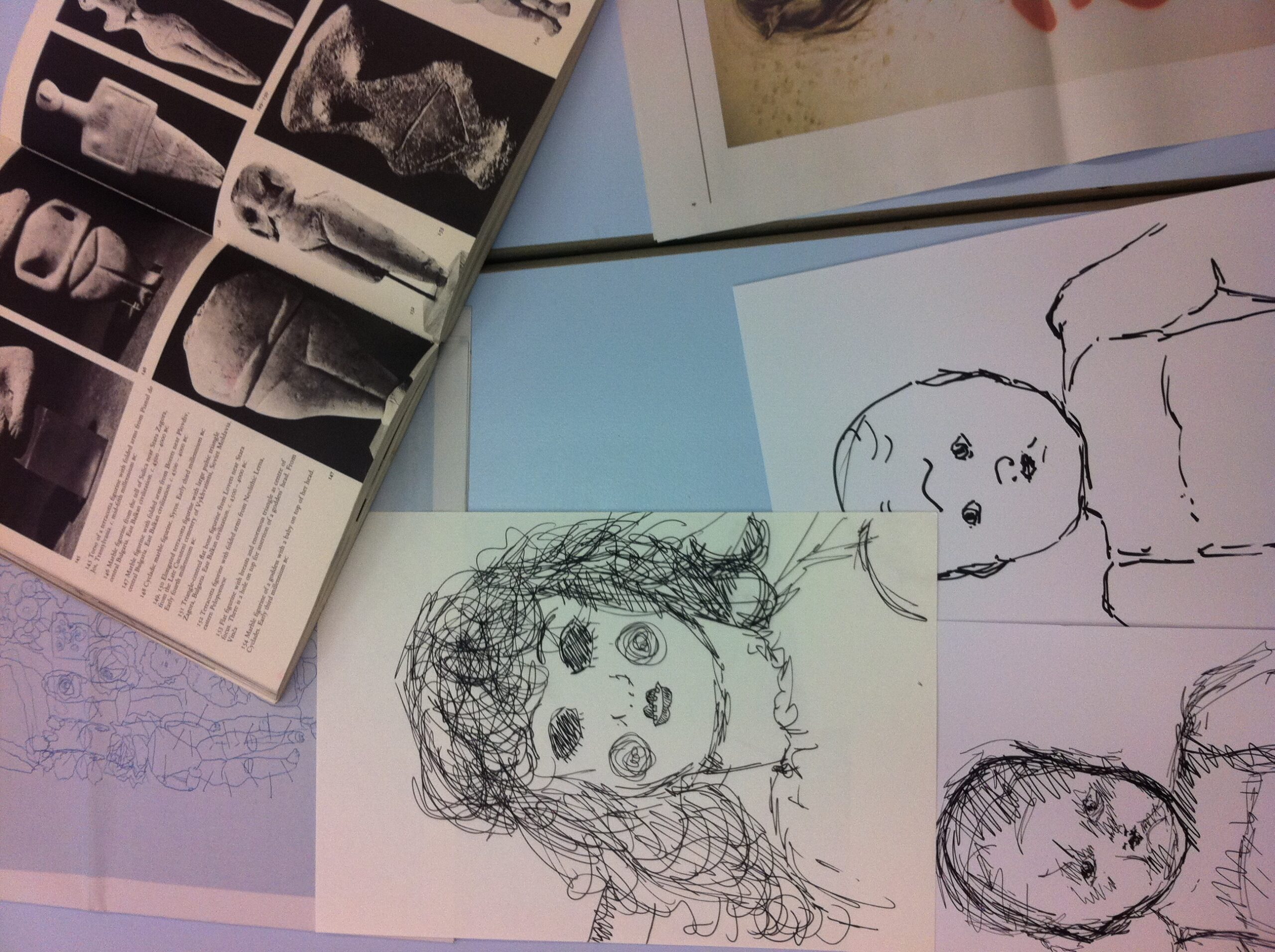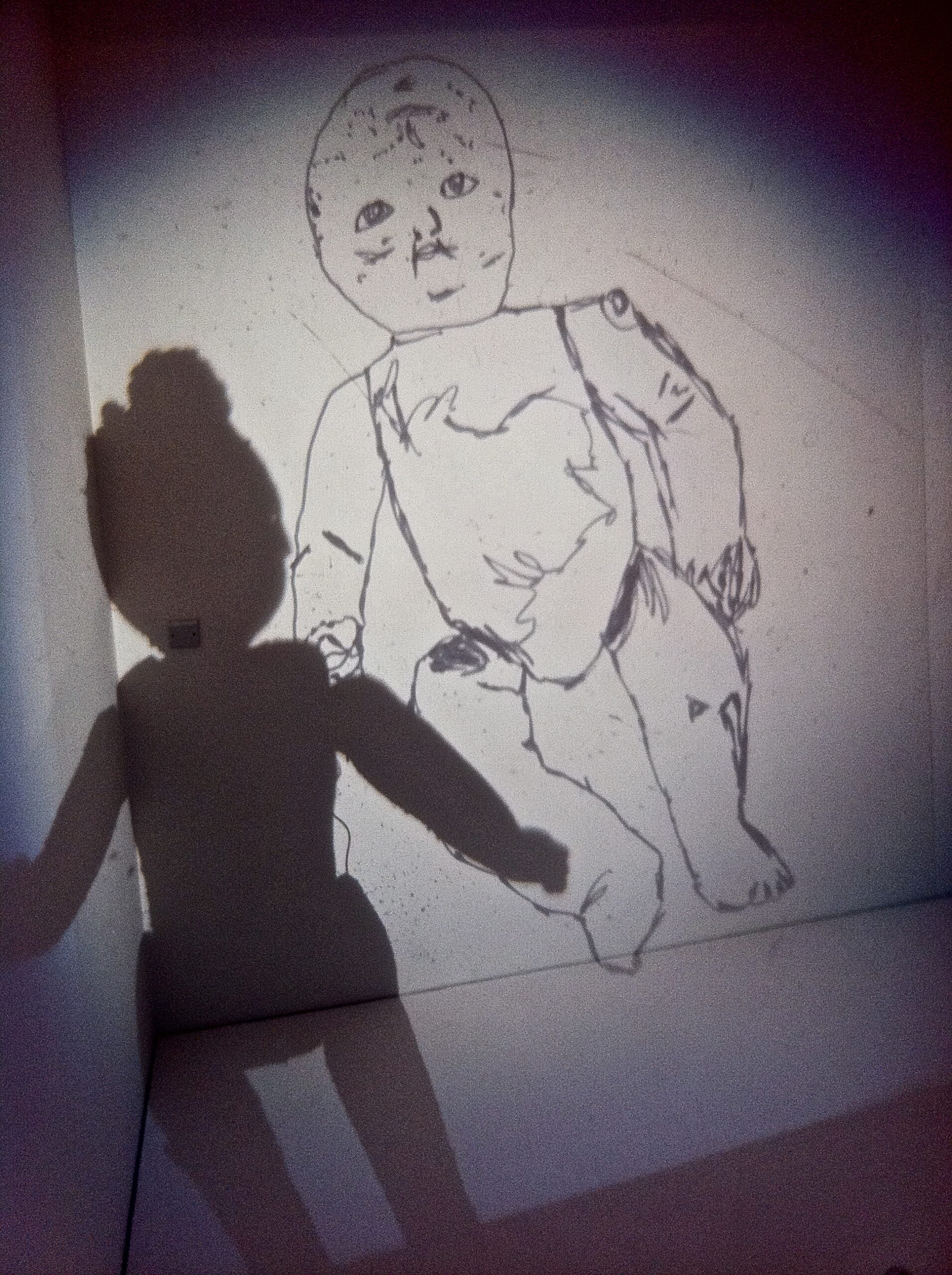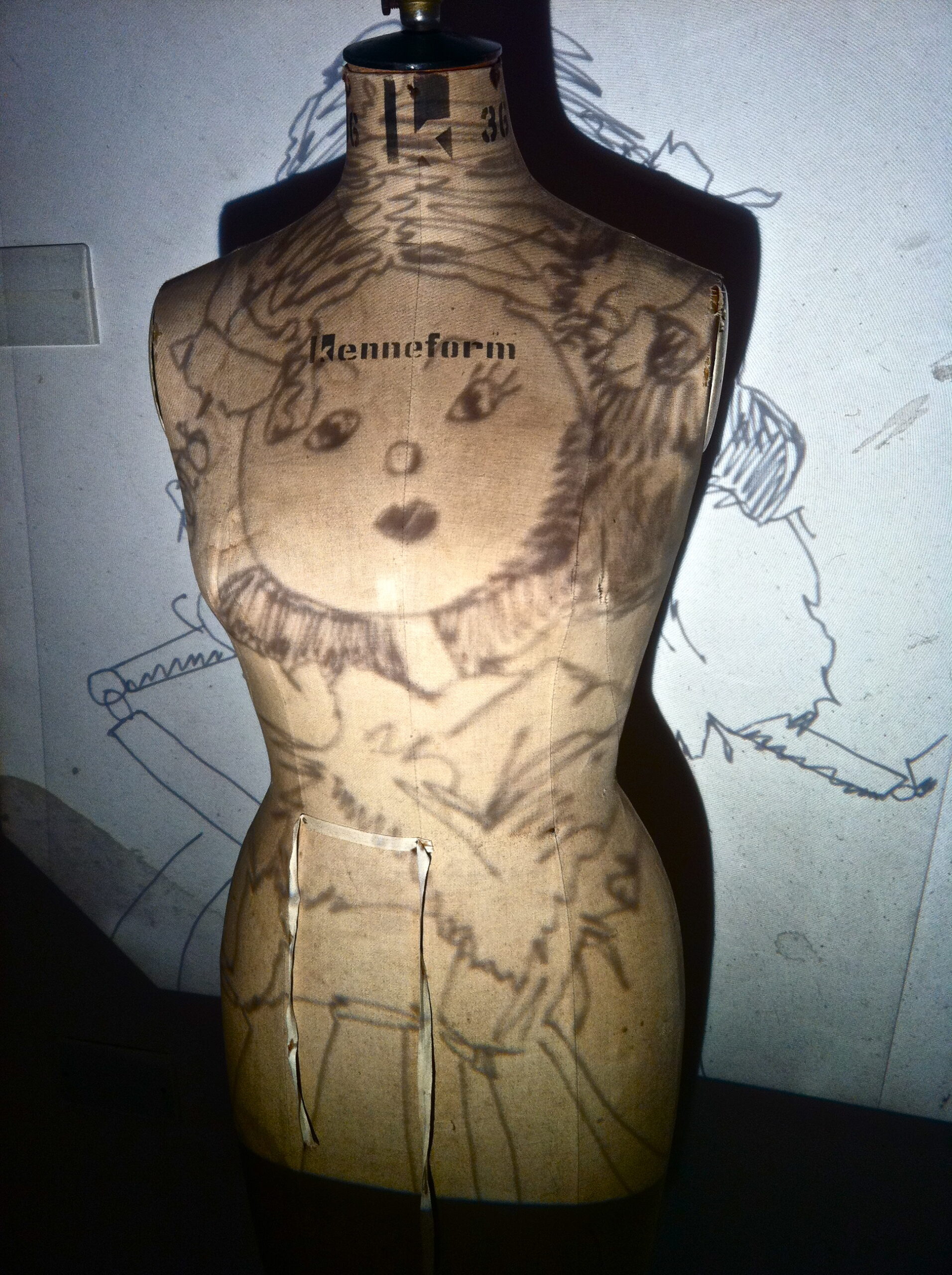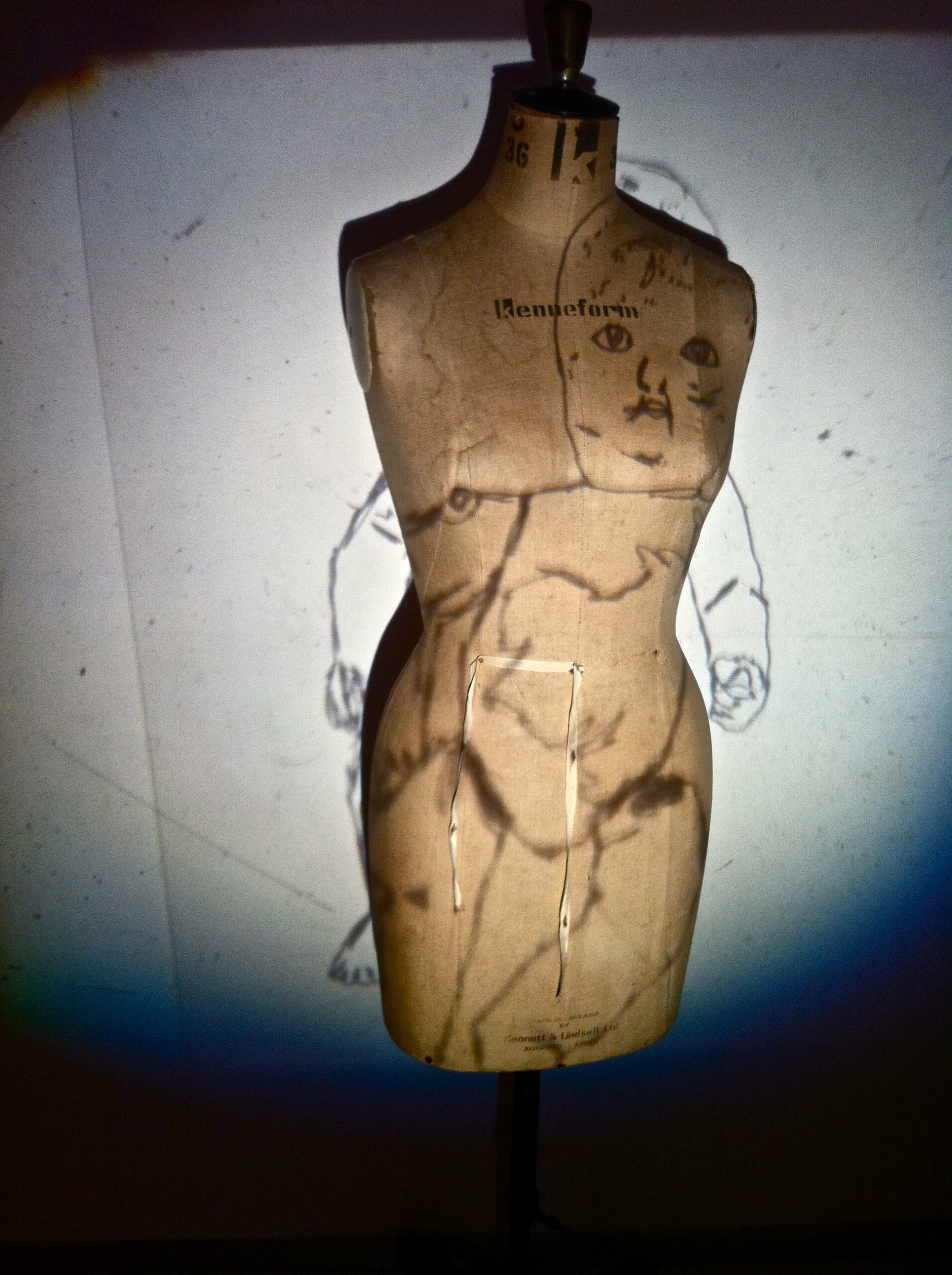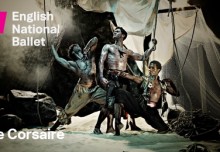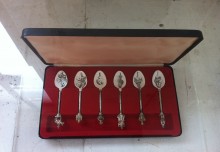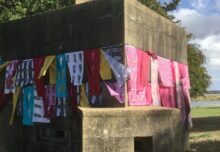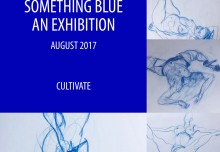
The ‘Doll Parts’ drawing event took place on Saturday the 28th September in the fantastic purpose built learning studio at Firstsite Gallery Colchester. I set up a ‘tableau’ of dolls, mannequins and marionettes old and new.
Some of the dolls were actually my own and one of the first comments was how they were in such good condition considering their age (and mine!). This immediately sparked a discussion around how girls treat their dolls, which always fascinates me. It seems you were either a girl who cossetted and groomed your dolls like children, keeping them clean and undamaged or you were a girl who used them like ‘voodoo’ dolls – hair cut and pulled out, clothes torn, faces drawn all over. I was in the former camp – my dolls were always perfect, pristine, I wouldn’t have dreamed of damaging them or ‘using them up’. BUT. Now I pull them apart in my images, dismember them. Behead them. Tear their hair out and their eyes. But don’t start psychoanalysing me; that’s what my Doctorate research is for…
The women handled and studied the dolls and it was interesting to see which ones they connected with. Various other people strayed in from the galleries, all had immediate responses to the dolls and wanted to comment on them. We talked a little about why people have such a gut reaction to dolls – what their uncanny quality actually is. We also reflected on the ‘evolution’ of popular dolls through different decades. In the 50′s and 60′s baby dolls were the thing, training us to be little mothers. Indeed, my first doll (‘Annabel’) was given to me age 2 as a baby substitute when my first sibling was born. The in the 70′s and 80′s girls obsessed about Barbie and her extensive wardrobe. Then Bratz arrived in the 90′s – they seem highly sexualised compared even to Barbie. It’s as if the doll itself is growing up and childhood is shrinking accordingly.
